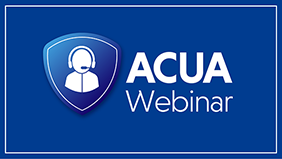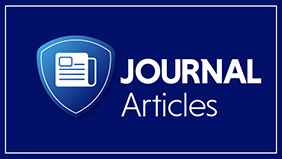Auditing Student Organizations





By the ACUA Auditing & Accounting Principles Subcommittee
The ACUA Auditing and Accounting Principles Subcommittee is committed to providing members with emerging information in our field. This article features the recently released IIA Third-Party Topical Requirement, clarification on the new reporting requirements on governance, risk management, and controls, plus modifications to the 529 education savings plan that allows tax savings for professional certification expenses.
Topical Requirements are a new, mandatory component of the Institute of Internal Auditors’ (IIA) Global Internal Audit Standards. Internal auditors must apply the Topical Requirements for assurance engagements in the following situations:
What’s New?
The Third-Party Topical requirement was finalized on September 15, 2025, and will become effective September 15, 2026. According to the IIA, a third-party is “an external individual, group, or entity with whom an organization (‘the primary organization’) has a business relationship.” In simpler terms, this means any person, group, or business your institution works with.
Importantly, the requirement does not just apply to your direct third-party relationships. It also covers any subcontracted relationships, even those several layers down, such as fourth-level subcontractors, if your contract allows them. This broad scope ensures that risks are managed throughout your entire supply chain.
What does the Third-Party Topical Requirement involve?
Internal auditors need to assess their institution’s contract management throughout the third-party life cycle, consisting of selecting, contracting, onboarding, monitoring, and offboarding. Internal auditors should consider these stages when assessing the requirements for these three key areas:
By understanding and applying these requirements, your institution can better manage third-party risks and strengthen its overall governance.
Download the Third-Party Topical Requirement and a user guide from the IIA at:
https://www.theiia.org/en/standards/2024-standards/topical-requirements/third-party/
Other topical requirements to be aware of:
Cybersecurity – effective February 5, 2026
Organization Behavior – public comment period ended, pending finalization.
Organizational Resilience – pending public comment.
https://www.theiia.org/en/standards/2024-standards/topical-requirements
The new IIA Global Internal Audit Standards, effective January 9, 2025, introduce more structured and rigorous reporting requirements for Governance, Risk Management, and Controls (GRC). They emphasize clarity, consistency, and alignment with stakeholder expectations.
During an engagement, the Internal Audit function must evaluate the governance processes to ensure the organization promotes ethical behavior, accountability, and transparency. Auditors must identify key risks and ensure they are managed effectively, and review the control framework to identify control deficiencies, weaknesses, and failures.
Standard 14.5 Engagement Conclusions requires internal auditors to develop an engagement conclusion that summarizes the results relative to the engagement objectives. In addition, this standard states “assurance engagement conclusions must include the internal auditor’s judgment regarding the effectiveness of the governance, risk management, and control processes of the activity under review, including an acknowledgment of when processes are effective.”
The considerations for implementation of this standard recommend having methodologies for the internal audit function in the form of a rating scale indicating whether reasonable assurance exists regarding the effectiveness of controls. An example is developing criteria for a scale that indicates “satisfactory, partially satisfactory, needs improvement, or unsatisfactory.”
The AAP Committee aggregated the ratings used by the committee members and created the following example of a rating methodology that is applicable to report ratings and GRC ratings:

Standard 15.1 Final Engagement Communication states the final communication for assurance engagements must include a “conclusion regarding the effectiveness of the governance, risk management, and control processes of the activity required,” in addition to the continuing requirements of objectives, scope, recommendations, and any action plans. Auditors are encouraged to use their engagement conclusions derived from their methodologies to meet this reporting standard.
A provision in the One Big Beautiful Bill Act (OBBBA) that was signed into law in July 2025 included changes in 529 education savings plans that may benefit ACUA members. Traditionally 529 plans were reserved for undergraduate and graduate degree programs, but now certain professional certification and credentialing programs are covered as qualifying expenses. This includes several of our most sought-after certifications, including the Certified Internal Auditor (CIA), the Certified Information Systems Auditor (CISA), and the Certified Public Accountant (CPA).
This is a great opportunity to invest in your professional development, especially if your department does not cover or reimburse certification expenses. Eligible expenses can include study materials, exam fees, and even continuing education required to maintain your credential.
See Section 70414 of the OBBBA for more information. As always, everyone’s tax situation is different, so please consult with your tax advisor to confirm eligibility. Check with your financial institution for assistance setting up a 529 plan.


By Amaya Beck
Internal auditors are tasked with evaluating organizational processes to ensure compliance with laws and regulations, as well as identifying areas for improvement. However, like all professionals, they are prone to psychological biases that can influence their judgments and decisions. These biases can lead to inaccurate audit findings, undermine the credibility of the audit process, and ultimately affect organizational decision-making. By implementing mitigation strategies, Internal Auditors can implement mitigation strategies and enhance the credibility of their work and contribute to more effective organizational governance.
Several biases are particularly relevant to internal auditors:
1. Structured Decision-Making Tools: Six Thinking Hats Technique
The Six Thinking Hats technique, developed by Edward de Bono, offers a structured approach to decision-making by encouraging diverse perspectives. This method involves assigning different colored hats to represent various thinking styles: White Hat for facts, Black Hat for risks, Green Hat for creativity, Red Hat for emotions, Yellow Hat for benefits, and Blue Hat for process management. Auditors should metaphorically don the different hats and systematically consider multiple viewpoints to reduce the impact of personal biases and ensure more comprehensive evaluations.
2. Peer Reviews and Second Opinions
Engaging in peer reviews or seeking second opinions can help challenge assumptions and identify potential biases. This collaborative approach fosters a culture of critical evaluation and enhances the reliability of audit findings.
3. Training and Awareness Programs
Educating auditors about common biases and their effects is crucial. Training programs should emphasize the importance of recognizing and mitigating biases to promote a culture of objectivity within audit teams.
4. Organizational Independence and Reporting Lines
Ensuring internal auditors report directly to the audit committee or an equivalent body helps maintain independence and reduces the influence of organizational pressures that might lead to biased judgments.
Conclusion
Mitigating bias in internal auditing is essential for maintaining the integrity and credibility of audit processes. By employing structured decision-making techniques, fostering a culture of peer review, and enhancing awareness of cognitive biases, internal auditors can significantly reduce the impact of biases on their work. These strategies not only improve the quality of audit findings but also contribute to more informed organizational decision-making, ultimately enhancing governance and compliance. By adopting these strategies, internal auditors can enhance their role as guardians of organizational integrity and contribute to more effective governance and compliance practices.
⁂
Resources



